B
BACK
The side reverse to the face of a panel, or the poorer side of a panel in any grade of plywood calling for a face and back.
BALANCED MATCHED
Two or more veneer components or leaves of equal size to make up a single face.
BALANCED PANEL
For purposes of this Standard, a balanced panel is one which is free from warp that affects serviceability for its intended use.
BANDING
Portion of wood extending around one or more sides of plywood panels.
BARK POCKET
Comparatively small area of bark around which normal wood has grown.
BLENDING
Color change that is detectable at a distance of 1.8 m to 2.4 m (6 feet to 8 feet) but which does not seriously detract from the overall appearance of the panel.
BOOK MATCH
Adjacent pieces of veneer from a flitch or log are opened like a book and spliced to make up the face with matching occurring at the spliced joints. The fibers of the wood, slanting in opposite directions in the adjacent sheets, create a characteristic light and dark effect when the surface is seen from an angle.
BRASHNESS
Condition of wood characterized by low resistance to shock and by abrupt failure across the grain without splintering.
BURL
A swirl, twist or distortion in the grain of the wood which usually occurs near a knot or crotch. A burl can often be associated with abrupt color variation and/or a cluster of small dark piths caused by a cluster of adventitious buds.
BURL, BLENDING
A swirl, twist or distortion in the grain of the wood which usually occurs near a knot or crotch but does not contain a knot and does not contain abrupt color variation. A blending burl is detectable at 1.8 m to 2.4 m (6 feet to 8 feet) as a swirl or roundel.
C
CATHEDRAL
A grain appearance characterized by a series of stacked and inverted “V” or cathedral type of springwood (earlywood) summerwood (latewood) patterns common in plain-sliced (flat-cut) veneer (see split heart).
CENTERS
Inner layers whose grain direction runs parallel to that of the outer plies. May be of parallel laminated plies.
CENTER MATCH
An even number of veneer components or leaves of equal size matched with a joint in the center of the panel to achieve horizontal symmetry.
CHECKS
Small slits running parallel to grain of wood, caused chiefly by strains produced in seasoning.
COMB GRAIN
A quality of rift cut veneer with exceptionally straight grain and closely spaced growth increments resembling the appearance of long strands of combed hair.
COMPONENT (OF FACE)
An individual piece of veneer that is jointed to other pieces to achieve a full length and width face. Terms used interchangeably with component in the context of the face are piece and leaf.
CORE
The inner part of plywood between face and back, usually veneer; however, it may be of sawed lumber, or it may be particleboard, MDF, hardboard or of some other material.
CORE, BANDED
Core that has been made with banding on one or more sides.
CROSSBANDING
Veneer used in the construction of plywood with five or more plies. Crossbands are placed at eight angles to the grain of the faces and are typically placed adjacent to the face and back. Also refers to all inner layers of veneer whose grain direction runs perpendicular to that of the outer plies and may include parallel laminated plies.
CROSS BAR
Irregularity of grain resembling a dip in the grain running at right angles, or nearly so, to the length of the veneer.
CROSS BREAK
Separation of the wood cells across the grain. Such breaks may be due to internal strains resulting from unequal longitudinal shrinkage or to external forces.
CROSS FIGURE
A series of naturally occurring figure effects characterized by mild or dominant patterns across the grain in some faces. For example, a washboard effect occurs in fiddle-back cross figure; cross wrinkles can occur in the mottle figure.
D
DECAY
The decomposition of wood substance by fungi. The incipient stage is characterized by discoloration, and may be accompanied by a softening of the wood substance. The final or ultimate state is characterized by the partial or complete collapse of the wood structure and the destruction of the wood substance.
DEFECT, OPEN
Checks, splits, open joints, knotholes, cracks, loose knots, wormholes, gaps, voids, or other openings interrupting the smooth continuity of the wood surface.
DELAMINATION
Separation of plies or layers of wood or other material through failure of the adhesive bond.
DISCOLORATIONS
Stains in wood substances. Common veneer stains are sap stains, blue stains, stain produced by chemical action caused by the iron in the cutting knife coming in contact with the tannic acid of the wood, and those resulting from the chemical action of the glue.
DOZE (SYNONYMOUS WITH DOTE)
A form of incipient decay characterized by a dull and lifeless appearance of the wood, accompanied by a loss of strength and softening of the wood substance.
E
EMISSION LEVEL
The formaldehyde concentration in testing wood panel products using ASTM E 1333, Determining Formaldehyde Levels From Wood Products Under Defined Test Conditions Using A Large Chamber.
F
FACE
The better side of any plywood panel in which the outer plies are of different veneer grades. Also either side of a panel in which there is no difference in the veneer grade of the outer plies.
FIGURE
The pattem produced in a wood surface by annual growth rings, rays, knots, deviations from natural grain such as interlocked, curly and wavy grain, and irregular coloration.
FINGER JOINT
A series of fingers machined on the ends of two pieces of wood to be joined, which mesh together and are held firmly in position with an adhesive.
FLAKE
See fleck.
FLAT-CUT
See plain-sliced.
FLECK, RAY
Portion of a ray as it appears on the quartered or rift-cut surface. Fleck can be a dominant appearance feature in oak and is sometimes referred to as flake.
FLITCH
A complete bundle of thin veneer sheets laid together in sequence as they are cut from a given log or section of a log.
G
GAP
Open slits in the inner plies or improperly joined veneers.
GRAIN
The direction, size, arrangement and appearance of the fibers in wood or veneer.
GRAIN RUPTURE
Veneer with slight breaks from improper cutting or irregular grain.
GRAIN SLOPE
Expression of the angle of the grain to the long edges of the veneer component.
GRAIN SWEEP
Expression of the angle of the grain to the long edges of the veneer component over the area extending one-eighth of the length of the piece from the ends.
GUM POCKETS
Well-defined openings between rings of annual growth, containing gum or evidence of prior gum accumulations.
GUM SPOTS AND STREAKS
Gum or resinous material or color spots and streaks caused by prior resin accumulations sometimes found on panel surfaces.
H
HAIRLINE
A thin, perceptible line showing at the joint of two pieces of wood.
HALF-ROUND
A method of veneer cutting similar to rotary cutting, except that the piece being cut is secured to a “stay log,” a device that permits the cutting of the log on a wider sweep than when mounted with its center secured in the lathe to produce rotary sliced veneer. A type of half-round cutting may be used to achieve plain-sliced or flat-cut veneer.
HARDBOARD
Homogeneous panels manufactured primarily from inter-felted lignocellulosic (wood) fibers consolidated under heat and pressure with a density
of 497 kg/m3 (31 lb/cu.ft.) or more.
HARDWOOD
General term used to designate lumber or veneer produced from temperate zone deciduous or tropical broad-leaved trees in contrast to softwood, which is produced from trees which are usually needle bearing or coniferous. The term does not infer hardness in its usual sense.
HEARTWOOD
The nonactive or dormant center of a tree generally distinguishable from the outer portion (sapwood) by its darker color.
HOLES, WORM
Holes resulting from infestation of worms.
I
INDUSTRIAL PANELS
Generally unfinished multi-ply products which consist of various combinations of hardwood or decorative veneer faces and inner ply materials (i.e., veneer, particleboard, MDF, and hardboard). These are generally cut-tosize and stock panels used in making cabinets, furniture, laminated block flooring and panels for other non-structural applications.
INNER PLIES
Plies other than face or back plies in a panel construction. Crossbands and centers are classed as inner plies (see core).
J
JOINT
The common edge between two adjacent materials in the same plane.
JOINT, EDGE
Joint running parallel to the grain of the wood.
JOINT, OPEN
Joint in which two adjacent pieces of veneer in the same plane do not fit tightly together.
K
KNOT
Cross section of tree branch or limb with grain usually running at right angles to that of the piece of wood in which it occurs.
KNOT, OPEN
Opening produced when a portion of the wood substance of a knot has dropped out, or where cross checks have occurred to produce an opening.
KNOTHOLES
Openings produced when knots drop from the wood in which they were embedded.
KNOTS, PIN
Sound knots 6.4 mm (1/4 inch) or less in diameter containing dark centers.
KNOTS, BLENDING PIN
Sound knots 6.4 mm (1/4 inch) or less that generally do not contain dark centers. Blending pin knots are barely detectable at a distance of 1.8 m to 2.4 m (6 feet to 8 feet), do not seriously detract from the overall appearance of the panel, and are permitted in all grades.
KNOTS, SOUND, TIGHT
Knots that are solid across their face and fixed by growth to retain their place.
L
LAP
A condition where one piece of veneer in the same ply overlaps another piece.
LAYER
A layer is a single veneer ply or two or more plies laminated with parallel grain direction. Two or more plies laminated with grain direction parallel is a “parallel laminated layer”.
LOOSE SIDE
In knife-cut veneer, that side of the sheet that was in contact with the knife as the veneer was being cut, and containing cutting checks (lathe checks) because of the bending of the wood at the knife edge.
M
MEDIUM DENSITY FIBERBOARD (MDF)
A panel or core product manufactured from wood fibers combined with a synthetic resin or other suitable binder adhesive.MDF is manufactured with a minimum density of 497 kg/m3 (31 lb/cu.ft.) up to 881 kg/m3 (55 lb/cu.ft.) by the application of heat and pressure by a process in which the fiber bond is substantially created by the added binder.
MEDULLARY RAYS
Cells that radiate from the central part of a log, much like the curved spokes of a wheel (primarily oak.)
MINERAL
See streaks, mineral.
O
OCCASIONAL
A small number of characteristics that are arranged somewhat diversely within the panel face.
P
PARTICLEBOARD
A panel or core product composed of small particles of wood and wood fiber that are bonded together with synthetic resin adhesives in the presence of heat and pressure.
PECKY
Pockets of disintegrated wood caused by localized decay, or wood areas with abrupt color change related to localized injury such as bird peck. Peck is sometimes considered as a decorative effect such as bird peck in pecan and hickory or pecky in cypress.
PLAIN-SLICED (FLAT-CUT)
Veneer sliced parallel to the pith of the log and approximately tangent to the growth rings to achieve flat-cut veneer. Plain-sliced veneer can be cut using either a horizontal or vertical slicing machine or by the half-round method using a rotary lathe.
PLEASING MATCHED
A face containing components which provides a pleasing overall appearance. The grain of the various components need not be matched at the joints. Sharp color contrasts at the joints of the components are not permitted.
PLY
A single sheet of veneer, or several pieces laid with adjoining edges, in a piece of plywood (see layer). In some constructions, a ply is used to refer to other wood components such as particleboard or MDF.
PLYWOOD, HARDWOOD
A panel composed of an assembly of layers or plies of veneer, or veneers in combination with lumber core, particleboard core, MDF core, hardboard core, or of special core material, joined with an adhesive. Except for special constructions, the grain of alternate plies is always approximately at right angles, and the face veneer is usually a hardwood species.
Q
QUARTER-SLICED (QUARTER-CUT)
A straight grain appearance achieved through the process of quarter-slicing, or through the use of veneer cut in any fashion that produces a straight grain effect. Cut is radial to the pith to the extent that ray flake is produced, and the amount may be unlimited.
R
RANDOM MATCHED (MISMATCHED)
A panel having the face made up of specially selected dissimilar (in color and grain) veneer strips of the same species and generally V-grooved at the joints between strips to simulate lumber planking.
RAY FLECK
See fleck.
RECONSTITUTED WOOD
A generic term for panel products made with strands, wafers, particles or fibers of wood. Individual products include hardboard, insulation board, particleboard, medium density fiberboard (MDF), and oriented strand board (OSB)/waferboard. Particleboard and MDF normally use ureaformaldehyde resin as the binding agent. OSB/waferboard normally uses phenolformaldehyde as the binding agent. Most hardboard and insulation board use the lignin from the processed wood as the binding agent. Most dry-process hardboards contain phenol-formaldehyde to increase bonding strength.
REPAIRS
A patch, shim, or filler material inserted and/or glued into veneer or a panel to achieve a sound surface.
REPAIRS, BLENDING
Wood or filler insertions similar in color to adjacent wood ,so as to blend well.
RIFT-CUT
A straight grain appearance achieved through the process of cutting at a slight angle to the radial on the halfround stay log, or through the use of veneer cut in any fashion that produces a straight grain with minimal ray fleck.
ROTARY-CUT
Veneer produced by centering the log in a lathe and turning it against a broad cutting knife which is set into the log at a slight angle.
ROUGH CUT
Irregular shaped areas of generally uneven corrugation on the surface of veneer, differing from the surrounding smooth veneer and occurring as the veneer is cut by the lathe or slicer.
RUNNING MATCH
The panel face is made from components running through the flitch consecutively. Any portion of a component left over from a face is used as the beginning component or leaf in starting the next panel.
S
SAPWOOD
The living wood of lighter color occurring in the outer portion of a tree, sometimes referred to as sap.
SHAKE
A separation along the grain of wood in which the greater part occurs between the rings of annual growth.
SLICED
Veneer produced by thrusting a log or sawed flitch into a slicing machine which shears off the veneer in sheets.
SLIGHT
Visible on observation, but does not interfere with the overall aesthetic appearance with consideration of the applicable grade of the panel.
SLIP MATCHED
A sheet from a flitch is slid across the sheet beneath and, without turning, spliced at the joints.
SMOOTH, TIGHT CUT
Veneer carefully cut to minimize lathe checks.
SOFTWOOD
General term used to describe lumber or veneer produced from needle and/or cone bearing trees (see hardwood).
SOLID CORE
Plywood panels in which all inner plies are grade J or better. Splits up to 3.2 mm (1/8 inch) are permitted.
SPECIES (TREES)
An internationally established botanical classification of trees.
SPECIFIC GRAVITY
The ratio of the weight of a certain volume of a substance to the weight of an equal volume of water, the temperature of which is 40C (39.20F).
SPLIT HEART
A method of achieving an inverted “V” or cathedral type figure by joining two “flat-cut” face componenets of similar color and grain. The cathedral type figure must be achieved by a single component in “AA” grade; the split heart method is permitted in grades “A” through “E”.
SPLITS
Separations of wood fiber running parallel to the grain.
STREAKS, MINERAL
Natural discolorations of the wood substance.
T
TIGHT SIDE
In knife-cut veneer, that side of the sheet that was farthest from the knife as the sheet was being cut and containing no cutting checks (lathe checks).
V
VENEER
A thin sheet of wood, rotary cut sliced, or sawed from a log, bolt or flitch. Veneer may be referred to as a ply when assembled into a panel.
V-GROOVED
Narrow and shallow V- or U-shaped channels machined on the plywood face surface to achieve a decorative effect. V-grooving is most commonly encountered in mismatched or random matched wall panels as the grooves fall on the edge joints of the pieces of veneer making the face appear as planking.
W
WALL PANELS
Generally up to 5-ply grooved or ungrooved plywood or reconstituted wood panels, generally in thicknesses of 12.7 mm (1/2 inch) or less, with at least one surface decorated and protected with a liquid applied or film overlay finish.
WOOD FILLER
An aggregate of resin and strands, shreds, or flour of wood which is used to fill openings in wood and provide
a smooth, durable surface.



